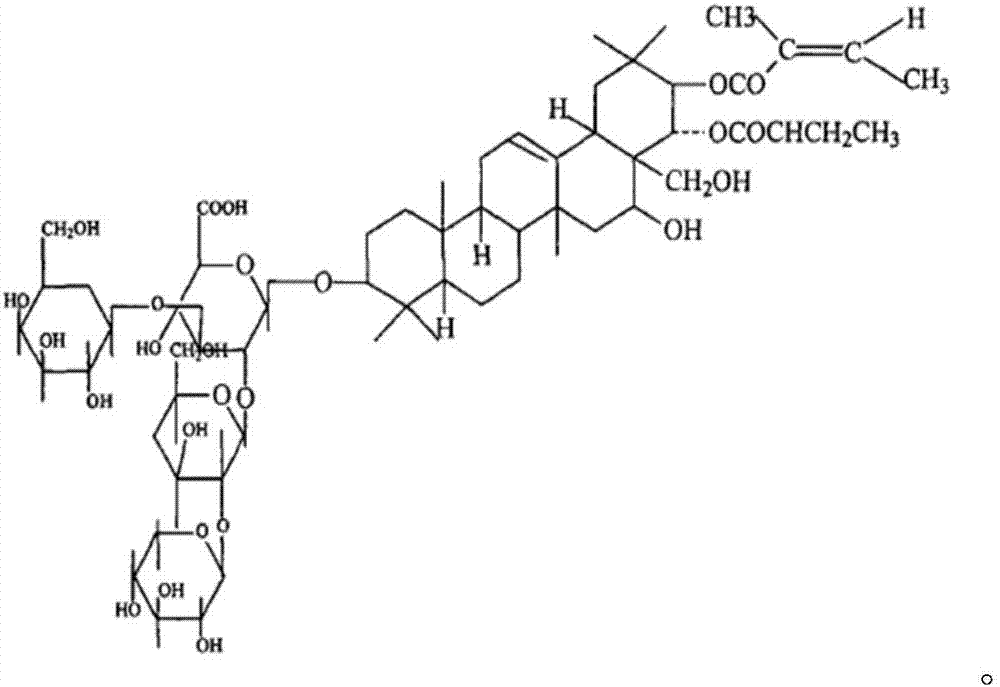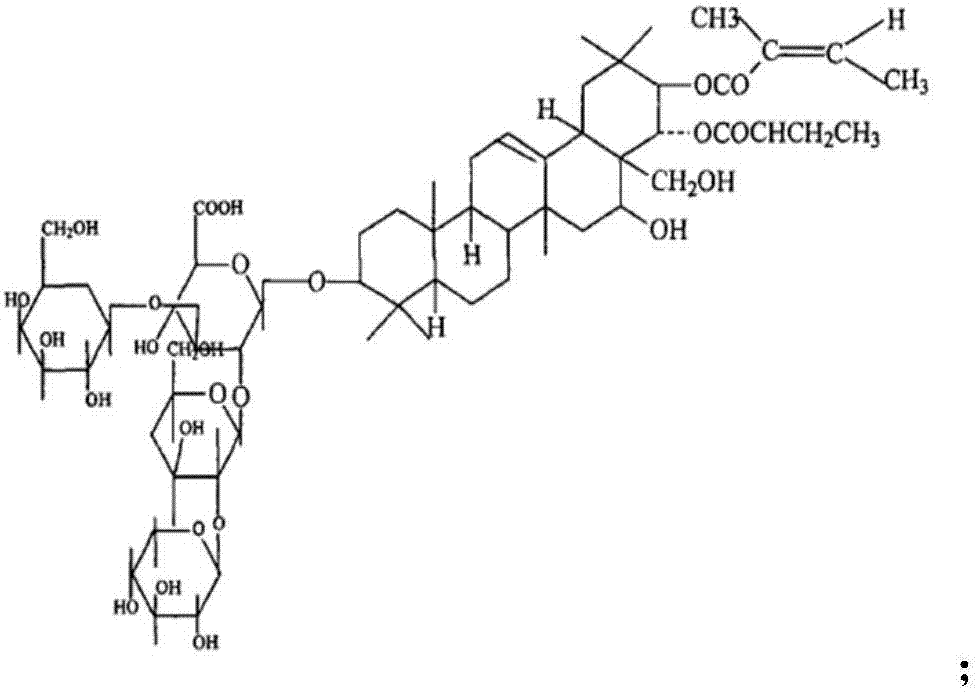Tea saponin modified electrolytic manganese residues and compound flooring tile prepared from tea saponin modified electrolytic manganese residues and waste plastics
A technology for electrolytic manganese slag and waste plastics, which is applied to buildings, building structures, floors, etc., can solve the problems of poor two-phase compatibility, high price, uneven dispersion, etc., and achieves increased filling and improved bonding. , the effect of increased strength
- Summary
- Abstract
- Description
- Claims
- Application Information
AI Technical Summary
Problems solved by technology
Method used
Image
Examples
Embodiment 1
[0035] Make tea saponin modified electrolytic manganese slag according to the following steps:
[0036] Add 93Kg electrolytic manganese slag and 2Kg NaOH into a high-speed mixer at 25°C, stir for 6-7 minutes, add 5Kg tea saponin at 65°C and heat and stir for 5-6 minutes to obtain tea saponin-modified electrolytic manganese slag.
[0037] Follow the steps below to make composite floor tiles:
[0038] a. After cleaning 200Kg of waste polyvinyl chloride plastic, dry it at 120°C for 1 hour, and then crush it to less than 4mm to obtain product A;
[0039] b. After mixing product A and 800Kg tea saponin modified electrolytic manganese slag with a high-speed mixer, product B is obtained;
[0040] c. Put product B on a three-roller mill and masticate it into a sheet at a temperature of 120-160°C and a thickness of 0.5-0.8mm, and then send it to a hot press for molding at a temperature of 150°C-160°C and a pressure of 3.5 MPa, the time is 4 to 5 minutes, and the C product is obtained...
Embodiment 2
[0064] Make tea saponin modified electrolytic manganese slag according to the following steps:
[0065] Add 92Kg of electrolytic manganese slag and 4Kg of NaOH into a high-speed mixer at 25°C, stir for 6-7 minutes, add 6Kg of tea saponin at 65°C, and heat and stir for 5-6 minutes to obtain tea saponin-modified electrolytic manganese slag.
[0066] Follow the steps below to make composite floor tiles:
[0067] a. After washing 250Kg of waste polyvinyl chloride plastic, dry it at 120°C for 1 hour, and then crush it to less than 4mm to obtain product A;
[0068] b. After mixing product A and 750Kg tea saponin modified electrolytic manganese slag with a high-speed mixer, product B is obtained;
[0069] c. Put product B on a three-roller mill and masticate it into a sheet at a temperature of 120-160°C and a thickness of 0.5-0.8mm, and then send it to a hot press for molding at a temperature of 150°C-160°C and a pressure of 3.5 MPa, the time is 4 to 5 minutes, and the C product is...
Embodiment 3
[0094] Make tea saponin modified electrolytic manganese slag according to the following steps:
[0095] Add 88Kg electrolytic manganese slag and 5Kg NaOH into a high-speed mixer at 25°C, stir for 6-7 minutes, add 7Kg tea saponin at 65°C, and heat and stir for 5-6 minutes to obtain tea saponin-modified electrolytic manganese slag.
[0096] Follow the steps below to make composite floor tiles:
[0097] a. After washing 300Kg of waste polyvinyl chloride plastic, dry it at 120°C for 1 hour, and then crush it to less than 4mm to obtain product A;
[0098] b. After mixing product A and 700Kg tea saponin modified electrolytic manganese slag with a high-speed mixer, product B is obtained;
[0099] c. Put product B on a three-roller mill and masticate it into a sheet at a temperature of 120-160°C and a thickness of 0.5-0.8mm, and then send it to a hot press for molding at a temperature of 150°C-160°C and a pressure of 3.5 MPa, the time is 4 to 5 minutes, and the C product is obtained...
PUM
| Property | Measurement | Unit |
|---|---|---|
| particle diameter | aaaaa | aaaaa |
Abstract
Description
Claims
Application Information
 Login to View More
Login to View More - R&D
- Intellectual Property
- Life Sciences
- Materials
- Tech Scout
- Unparalleled Data Quality
- Higher Quality Content
- 60% Fewer Hallucinations
Browse by: Latest US Patents, China's latest patents, Technical Efficacy Thesaurus, Application Domain, Technology Topic, Popular Technical Reports.
© 2025 PatSnap. All rights reserved.Legal|Privacy policy|Modern Slavery Act Transparency Statement|Sitemap|About US| Contact US: help@patsnap.com



